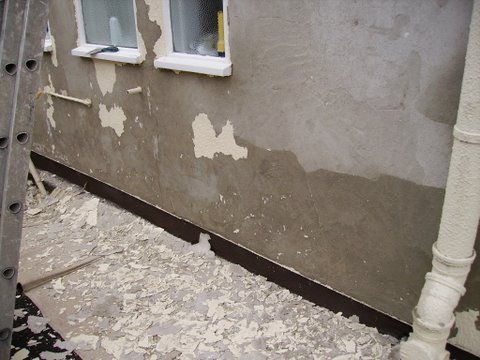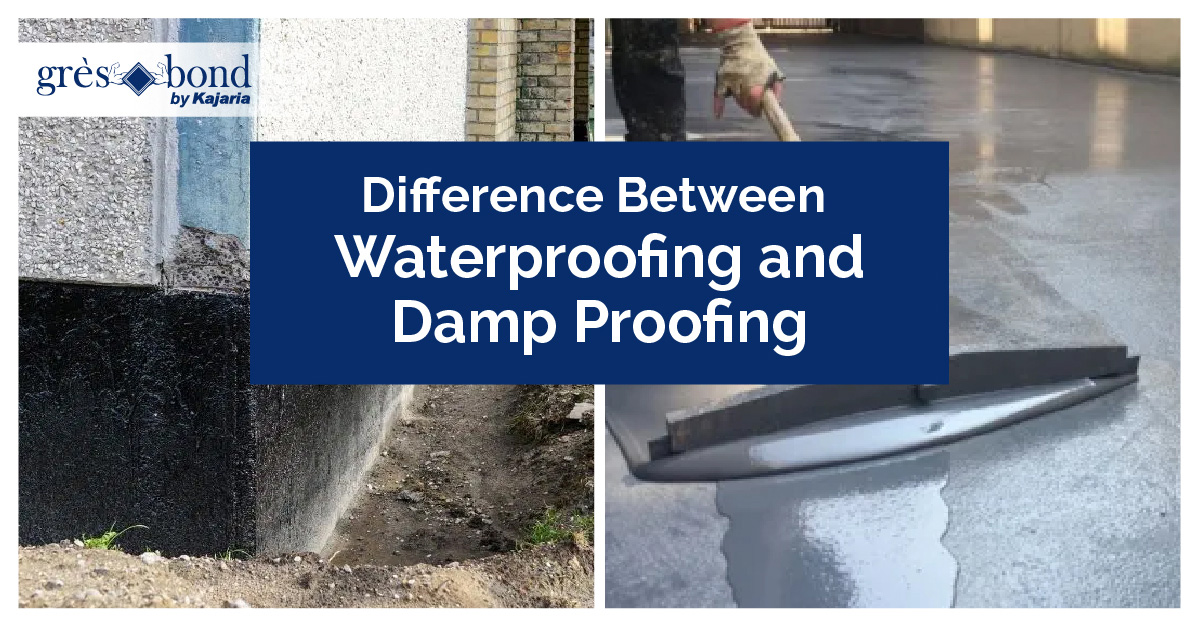Major advantages to hire a licensed damp specialist newcastle today
Major advantages to hire a licensed damp specialist newcastle today
Blog Article
Discovering the Various Methods and Solutions for Effective Damp Proofing
Moisture in structures poses considerable challenges to both structural stability and indoor air quality. Numerous strategies and services have actually arised to battle this prevalent problem. From conventional damp-proof membranes to innovative chemical treatments, each technique supplies distinct benefits. Recognizing these alternatives is important for reliable dampness control. However, choosing the best option depends on specific structure conditions and needs, prompting further exploration into the most reliable damp proofing methods offered.
Comprehending the Causes of Dampness
Although moisture can emerge from various resources, understanding these reasons is crucial for efficient remediation. Typically, dampness stems from three key resources: climbing wet, penetrating moist, and condensation. Climbing wet occurs when groundwater takes a trip upwards via permeable materials, such as block or stone, often as a result of an absence of an efficient barrier (damp proofing newcastle). Permeating wet is commonly brought on by outside variables, including roof covering leakages, defective seamless gutters, or harmed walls, enabling water to infiltrate a building. Condensation, on the other hand, results from excess dampness airborne, typically worsened by bad ventilation and temperature distinctions, causing water droplets basing on surfaces. Recognizing these underlying concerns is vital, as each kind of dampness requires a customized method for removal. Proper evaluation helps in establishing the most effective options, ultimately securing the architectural honesty of a building and enhancing indoor air quality
Standard Damp-Proof Membrane Layers

Chemical Damp-Proofing Solutions
Chemical damp-proofing services offer an innovative approach to avoid dampness invasion in structures. These techniques generally include the application of fluid chemicals that penetrate stonework and form an obstacle versus rising damp. Frequently used chemicals consist of silanes, siloxanes, and various other water-repellent representatives that respond with surface area products to develop a hydrophobic layer.The application procedure generally needs drilling openings right into the wall surfaces, infusing the chemical service, and allowing it to treat. This technique is especially advantageous for older frameworks where conventional damp-proof membrane layers might be unwise. Chemical damp-proofing can be less disruptive and much more cost-efficient than considerable restoration projects.While effective, these services depend on appropriate application and ecological conditions for peak performance. damp specialist newcastle. Routine upkeep and tracking are vital to guarantee the durability of the damp-proofing treatment. Overall, chemical damp-proofing represents a functional alternative for safeguarding structures against moisture-related damage
Dental Caries Wall Surface Construction Techniques
Tooth cavity wall building techniques provide countless benefits, particularly in dampness control and energy efficiency. By integrating an air space in between 2 layers of stonework, these wall surfaces successfully alleviate water ingress while improving insulation. This mix not only protects structures from moisture however likewise adds to lowered energy usage.
Benefits of Dental Caries Wall Surfaces
When taking into consideration reliable moist proofing techniques, the advantages of cavity walls attract attention plainly. Tooth cavity walls are composed of two separate layers, producing an air space that efficiently decreases dampness penetration. This style lessens the risk of dampness, as the outer wall serves as a barrier versus rain and water access. In addition, dental caries walls improve thermal insulation, which contributes to energy performance by decreasing warm loss. They also provide audio insulation, assisting to produce a quieter interior setting. Additionally, the air gap permits ventilation, which helps in wetness control and reduces the chance of mold and mildew development. These advantages not just enhance the overall convenience of a building however additionally contribute to its long life and architectural stability.
Moisture Control Techniques
Reliable moisture control techniques are crucial in tooth cavity wall building and construction to ensure lasting protection versus dampness. One main approach involves the incorporation of weep openings, which help with water drainage from the dental caries, stopping accumulation. Additionally, using breathable membrane layers can help handle moisture levels while enabling entraped vapor to leave. Correct positioning of insulation is also crucial, as it must not obstruct drainage courses. Guaranteeing that the external fallen leaves of the tooth cavity wall are constructed with waterproof materials boosts total durability. Normal maintenance checks are important to identify any obstructions or damage early, guarding the framework's honesty. Eventually, a combination of these techniques forms a durable protection against moisture invasion in cavity wall surfaces.
Insulation and Energy Efficiency
Insulation plays an essential duty in enhancing energy effectiveness within dental caries wall surface building. By including insulating materials, these wall surfaces develop a thermal barrier that minimizes warm loss and decreases energy consumption. Reliable insulation not only helps maintain a stable indoor temperature however additionally reduces the danger of wetness, as it stops condensation within the wall surface dental caries. Different strategies, such as the usage of stiff foam boards or mineral woollen, can be employed to achieve optimal insulation efficiency. Additionally, proper installment is vital to ensure that spaces and voids are lessened, which can or else jeopardize power performance. Ultimately, a well-insulated tooth cavity wall adds significantly to overall sustainability and decreases heating & cooling expenses for homeowners.
Outside Damp Proofing Approaches
Outside moist proofing techniques are important for securing frameworks from dampness seepage. Two reliable techniques include the application of water-proof membranes and the setup of French drains. These services aid mitigate water build-up and preserve the integrity of buildings.
Waterproof Membrane Application
While various techniques exist for preventing dampness ingress, the application of waterproof membrane layers continues to be a highly efficient external wet proofing technique. These membrane layers are normally made from materials such as polyethylene, rubber, or changed asphalt, providing a durable barrier against water penetration. The installment procedure includes applying the membrane layer to the outside surface areas of foundations or wall surfaces, making certain complete coverage to stop leakages. Proper bond and sealing at joints are essential to optimizing effectiveness. Water-proof membrane layers can be used in various forms, consisting of fluid layers and sheet membrane layers, enabling for flexibility based on the certain requirements of the framework. This technique not just safeguards buildings from dampness but additionally improves their durability and architectural stability.
French Drainpipe Installment
One efficient method for managing groundwater and preventing moisture buildup around a building's foundation is the setup of a French drain. This drainage system is composed of a trench loaded with gravel and a perforated pipe that reroutes surface water away from the foundation. Appropriate installment calls for mindful planning, making sure that the drainpipe inclines away from the structure to facilitate ideal water flow. Furthermore, the location of the drainpipe is vital; it needs to be positioned in locations susceptible to merging or excess wetness. Normal maintenance, including clearing debris from the crushed rock and guaranteeing the pipe continues to be unblocked, is essential for lasting performance. Inevitably, a well-installed French drain can considerably minimize the risk of water-related concerns in structures and basements.
Inside Waterproofing Methods
Inside waterproofing strategies are essential for securing a structure's interior from dampness seepage and potential water damage. These methods generally involve the application of specialized materials and techniques made to create a moisture barrier within the structure. One common method is the usage of water resistant coverings or sealants on walls and floorings, which protect against dampness from permeating surfaces.Additionally, installing interior drain systems, such as sump pumps, can effectively handle water build-up in basements and crawl rooms. An additional method involves the usage of vapor barriers, which are set up to prevent moisture motion from the ground right into living spaces.Moreover, attending to any fractures or spaces in walls or structures with ideal sealants ensures an extensive protection against water breach. By carrying out these interior waterproofing techniques, building proprietors can substantially decrease the risk of mold and mildew development, structural damage, and other moisture-related issues. Proper implementation of these techniques is crucial for lasting security and building integrity.
Routine Maintenance and Inspection Practices
Normal maintenance and evaluation methods are essential for guaranteeing the long-lasting effectiveness of damp proofing remedies in any building. Routine checks make it possible for residential property owners to determine very early indicators of dampness intrusion, such as peeling paint, mold and mildew growth, and musty smells. These indications can signal underlying concerns that need immediate attention.Inspections should be performed at the very least every year, concentrating on prone locations like cellars, crawl areas, and exterior wall surfaces. During these analyses, homeowner must analyze sealants, water drainage systems, and air flow to validate they function correctly.Additionally, preserving downspouts and rain gutters is essential, as stopped up systems can lead to water build-up near the structure. Executing a regular maintenance routine, together with prompt fixings, can substantially expand the lifespan more info of moist proofing procedures and secure the architectural integrity of the structure. Proactive actions eventually contribute to the total health and wellness of the living environment.
Frequently Asked Inquiries
How Much Time Does Damp Proofing Normally Last?
The duration of moist proofing performance differs, normally lasting between 20 to half a century. Factors such as application high quality, ecological conditions, and maintenance techniques greatly influence the durability of the damp proofing therapy.

Can I Damp Evidence My Home Myself?
The individual considered the feasibility of DIY damp proofing. With appropriate study and the appropriate products, it is feasible. Nonetheless, they also acknowledged the value of specialist guidance to guarantee long-lasting efficiency and stop future issues.
What Are the Signs of Ineffective Damp Proofing?
Indications of ineffective moist proofing include consistent musty smells, noticeable mold development, peeling paint, wet patches on wall surfaces, and wood degeneration - mould removal newcastle. Homeowners should resolve these problems without delay to avoid more damages and health and wellness concerns
Does Damp Proofing Affect Indoor Air Quality?

Just How Much Does Expert Damp Proofing Cost?
Expert moist proofing costs differ substantially, usually ranging from $1,000 to $5,000 relying on the residential property's dimension, the level of the damp issue, and selected approaches. Each scenario needs a customized analysis for precise rates. Commonly, dampness originates from three primary resources: climbing wet, penetrating wet, and condensation. When considering efficient moist proofing methods, the benefits of tooth cavity walls stand out prominently. External damp proofing approaches are crucial for safeguarding frameworks from wetness infiltration. While numerous methods exist for preventing moisture access, the application of water resistant membrane layers stays an extremely effective exterior wet proofing strategy. Signs of inadequate moist proofing include consistent mildewy odors, visible mold and mildew development, peeling paint, moist spots on walls, and wood degeneration.
Report this page